VISUAL ESSAY
The dirty business of apartheid-era dinosaurs: Inside an Eskom coal-fired power plant
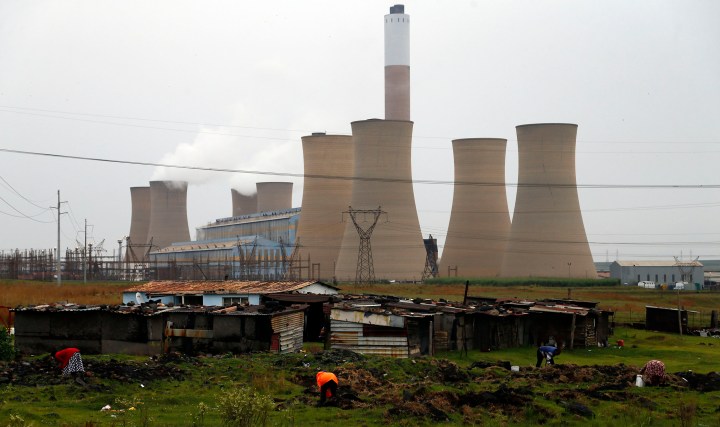
The state-owned power utility is in a terrible state. And nobody can deny that, with its unwieldy debt levels and archaic power stations well beyond their service years, Eskom faces insurmountable challenges. We take you into one of them to see how Eskom produces power and why we’ll be stuck with load shedding for some time.
Coal. It was formed in the past, over millennia, under the heat and pressure of burial. The vast, ubiquitous opencast pits and mines that scar the Mpumalanga landscape yield millions of tonnes of the black combustible sedimentary rock that powers South Africa.
For years, it has been – and still is – creating jobs from mines to power plants. This commodity, and the pits and mines from which it is extracted, is, however, fast gaining recognition by the world as the graveyard of future generations.
Closer to home, Eskom’s coal-fired power plants, which overwhelmingly dominate baseload power generation, are dinosaurs built to power the apartheid economy and not a modern, diversified South African one.

Coal stores at the Komati Power Station in Mpumalanga on 8 November 2021. (Photo: Felix Dlangamandla/Daily Maverick)
They have been, and to some extent still are, arenas of grand corruption and nefarious motives not in line with the utility’s core business.
It is a dirty business, made ever more dirty by actors with motives in conflict with climate imperatives and basic environmental standards. As reported by Reuters, smog from burning coal is laced with chemicals such as sulphur and nitrogen oxides, mercury and lead as well as with radioactive elements such as uranium and thorium.
The same report also noted that “5,000 South Africans die annually in the nation’s coal belt because the government has failed to fully enforce its own air quality standards”.
Pollution and global warming are not the only risks Eskom poses to South Africans. The national bane of load shedding also finds its origin in much of the corruption that has characterised Eskom’s governance over the past 14 years. Its website explains that load shedding “is a controlled process that responds to unplanned events in order to protect the electricity power system from a total blackout”.
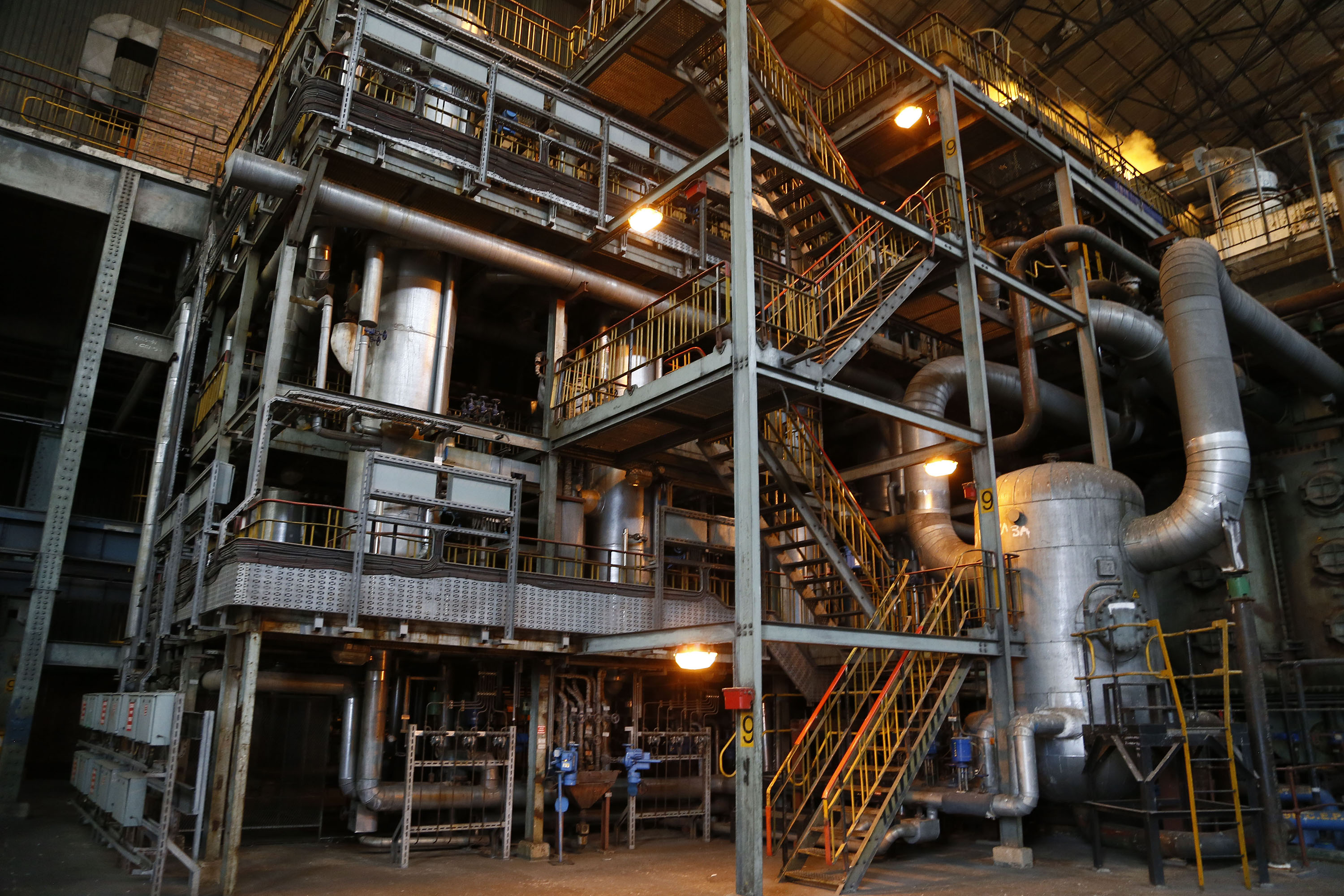
Inside the Komati Power Station on 8 November 2021. It is one of the oldest remaining coal-fired power stations in South Africa. (Photo: Felix Dlangamandla/Daily Maverick)
“While we generally use the word ‘blackout’ loosely to mean ‘no lights’ in our local area, a countrywide blackout has much more serious consequences.
“Blackouts occur when there is too much electricity demand and too little supply, bringing the power system into an imbalance and consequently tripping the system in its entirety.
“In South Africa,” Eskom explains, “we have to rely on ourselves to start the system from scratch – energising one power plant at a time and one section of the country at a time.
“In the event of a blackout… it could take up to two weeks to restore full power, which would have a severe impact on our country! This is why we use load shedding to manage our power system and protect it from such an event.”
So how did we get here and what is to be done? DM168 went on a fact-finding mission to get a glimpse of the past, present and future of Eskom.
Komati Power Station general manager Marcus Nemadodzi took DM168 on a tour of the station. It is one of the oldest remaining coal-fired power stations in South Africa and is next in line for decommissioning. It is also the site of a pilot project that offers a glimpse into how Eskom and the government intend to use the infrastructure left behind when the last unit’s turbine finishes its final rotation.
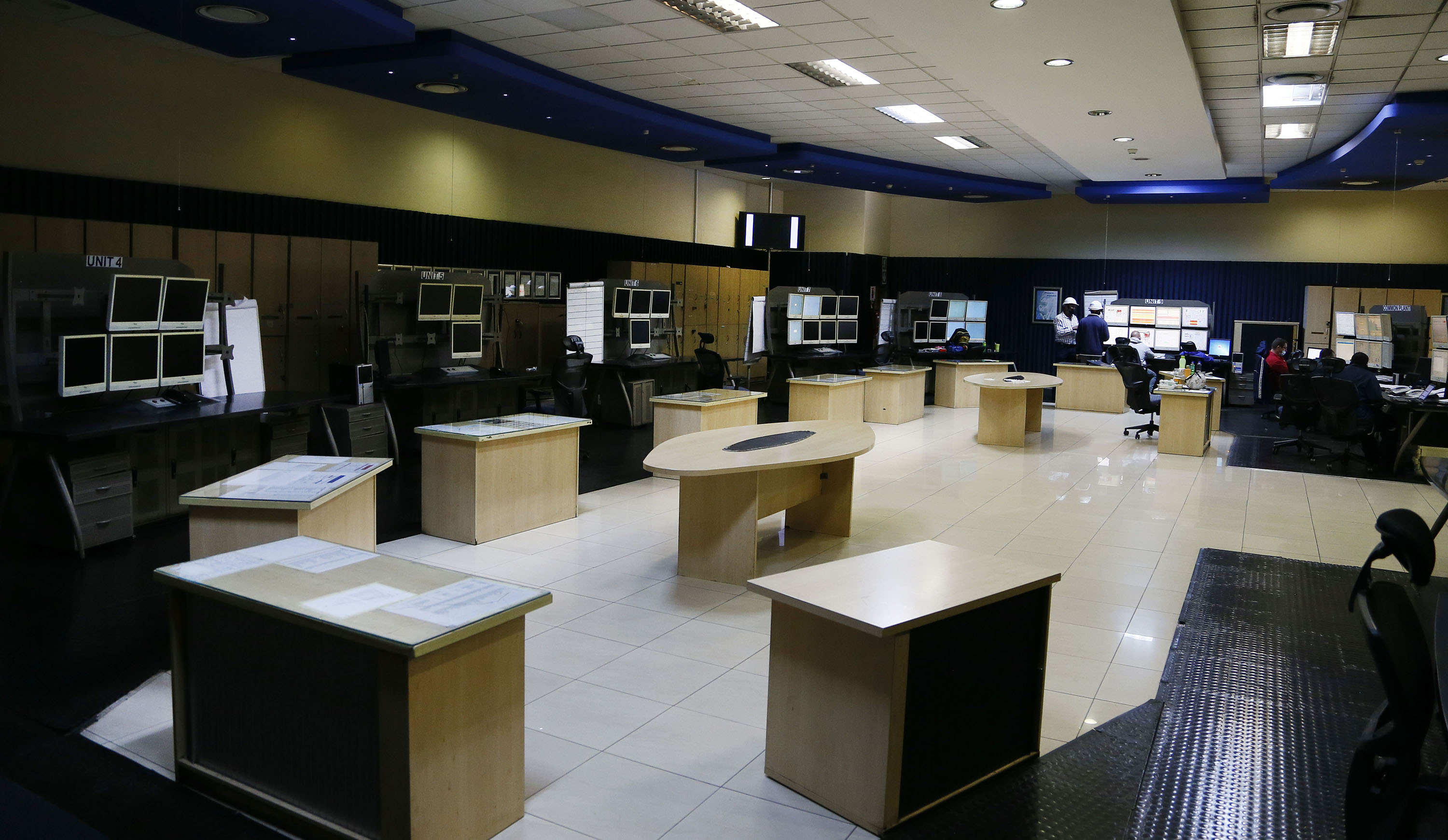
Operators in Unit 9 at the Komati Power Station on 8 November 2021. As evidenced by the blank monitors, the other eight units are switched off. The power station produces electricity with only one coal unit. (Photo: Felix Dlangamandla/Daily Maverick)
At its most basic, a power station is a converter of energy. The combustion of fuel – coal in this case – is a chemical energy conversion process that generates heat. This heat, in turn, converts water into steam at a very high temperature and pressure.
The heat or thermal energy in the steam drives the turbine, converting heat energy into mechanical energy.
Coupled to the turbine shaft is a generator. The kinetic energy of these often massive spinning turbines is transformed in the generator into electrical energy, which is synchronised with the grid. The end result is you, the end-user, being able to use electricity to power your life.
What the process looks like
It all starts with a coal mine, much like the one just outside of the small town of Ogies.
Transferred to the power station by truck or conveyor belt, the black stuff sits in a pile mandated to be a certain size to ensure there is always enough coal to burn. It is at this point, however, that many of the issues begin. Whether it’s broken conveyor belts or angry coal truck drivers, breaking the link between the site of extraction and the power plant can lead to losses in generating capacity and, subsequently, load shedding.
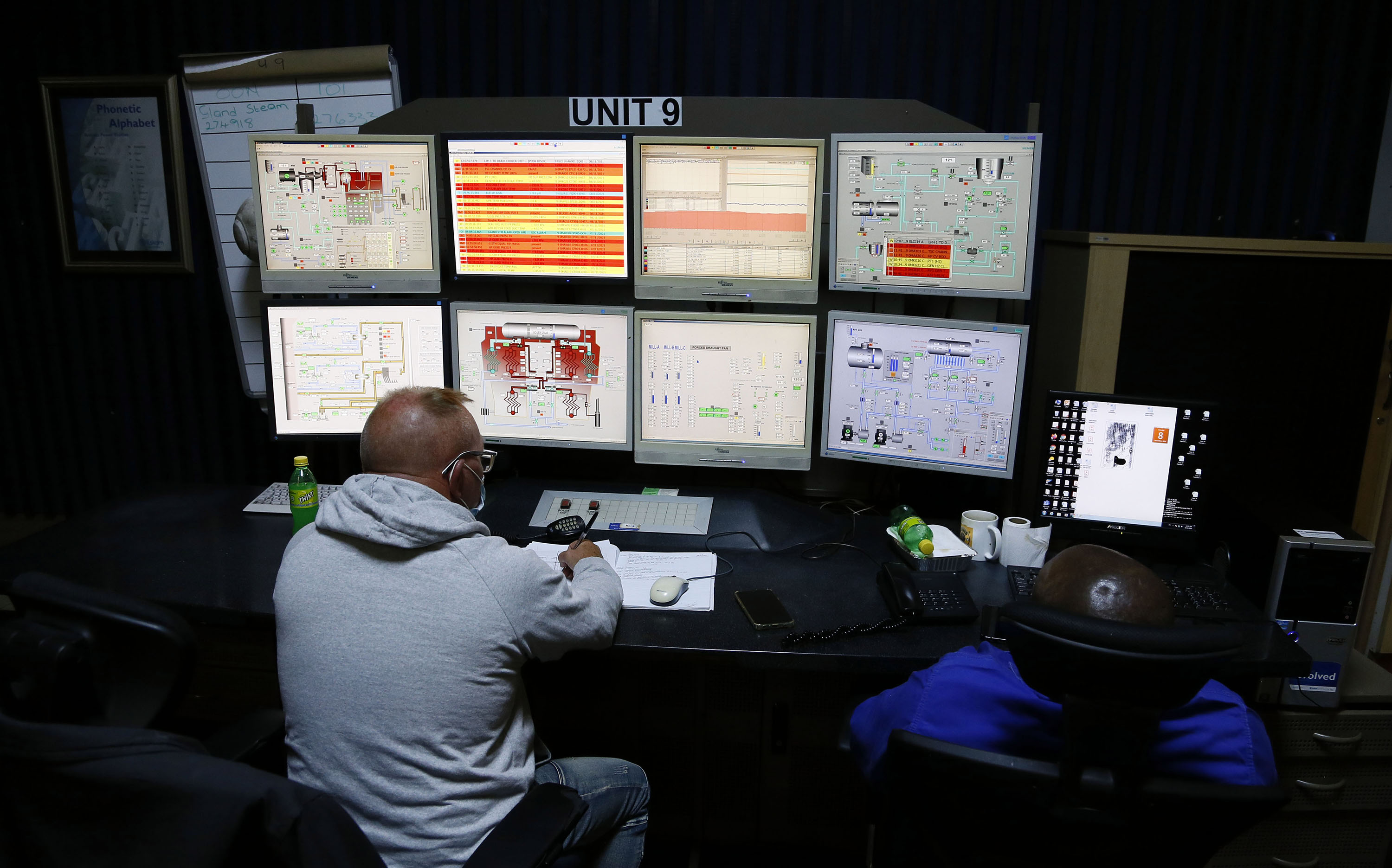
Operators in the Komati Power Station’s Unit 9, which produces about 120kW. (Photo: Felix Dlangamandla/Daily Maverick)
Eskom explains that conveyor systems are used to transport the coal from a nearby mine to a coal stockyard and then to the power station site. The purpose of the stockyard is to ensure there are sufficient coal reserves to keep the power station in operation if the mine encounters production problems.
From the coal yards, the coal is moved on another conveyor to a mill that pulverises it into a finer consistency that is more easily burnt for fuel. At Komati Power Station there are three dusty, noisy coal mills dedicated to each unit.
The pulverised coal is fed into a boiler furnace. Inside this giant furnace, hot air is blown through the pulverised coal to ignite it and create a consistent heat.
A power station with a single operating unit such as Komati may go through thousands of tonnes of coal a day.
This pales in comparison with a plant such as Lethabo, which burns 50,000 tonnes of coal, enough to fill 1,500 trucks each carrying 33 tonnes, every day. Boiler tubes are the hundreds of water-carrying metal pipes inside the boiler that, when heated, create the steam that drives turbines.
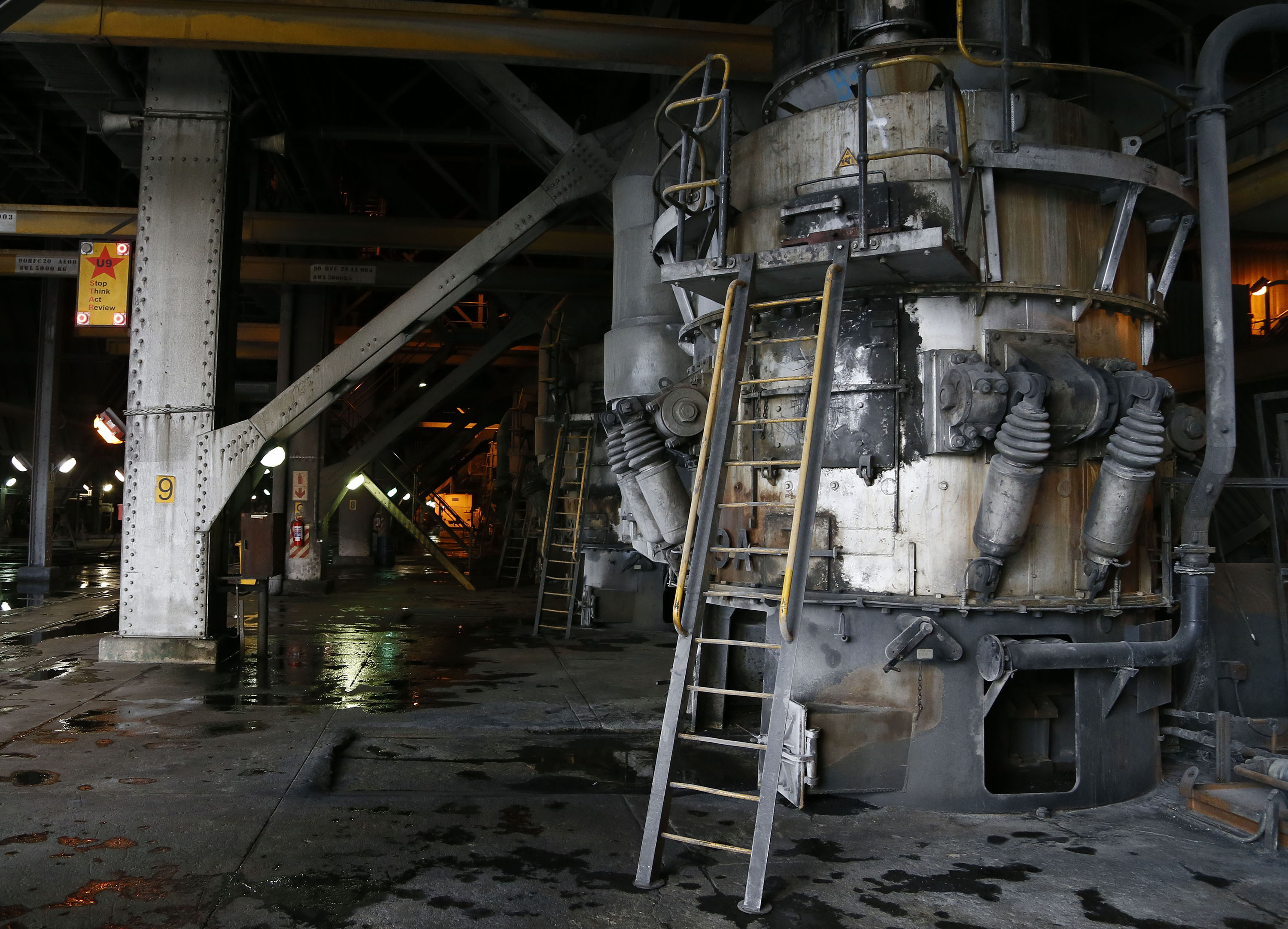
One of the coal mills at Komati’s Unit 9 on 8 November 2021. (Photo: Felix Dlangamandla/Daily Maverick)
Boiler tubes are notoriously problematic, even in the newer plants such as Medupi and Kusile.
Nemadodzi, the station manager, says the tubes are positioned close to one another and that, if there is a leak in one, superheated steam threatens to cut into the lines of other tubes, causing a chain reaction.
For this reason, boiler tube leaks are taken seriously by Eskom’s operators, who often have to shut down a unit to allow the turbine’s generator rotor to stop spinning. This cools things down enough so that technicians are able to repair the damage.
Maintenance of this kind can add to Eskom’s capacity woes, leading to the load shedding we experienced this week.
A News24 article says the myriad technical problems that contributed to the escalation of load shedding to Stage 4 included “a massive explosion, a fire, boiler tubes rupturing due to age and poor coal quality, and an earth leakage”. Eskom chief executive André de Ruyter confirmed in a media briefing on 9 November that the power utility had recorded breakdowns at Lethabo, Matimba, Kendal, Medupi, Duvha and Tutuka power stations.
News24 notes that “these breakdowns are part of the larger problem Eskom is facing with the reliability of its ageing stations”.

The coal furnace used to power a turbine at the Komati Power Station in Mpumalanga. (Photo: Felix Dlangamandla/Daily Maverick)
“Unplanned breakdowns have, since mid-2017, increased dramatically. In the 2020/21 financial year, roughly a quarter of Eskom’s generation capacity was lost to unplanned breakdowns.”
It is the job of operators in a power plant’s control room to monitor that everything is running smoothly. Data-logging computers continuously monitor the main operating alarm systems, and provide a constant flow of information on video screens and printouts. Ideally, there should be no red lights flashing. As DM168 saw during our visit, there is a gulf between the ideal and reality.
The mechanical issues related to the age of the coal-fired fleet are compounded by years of neglect and deferred maintenance.
The cost of keeping the power plants running in the red for all these years is being paid with the hundreds of jobs and businesses lost directly and indirectly due to load shedding.
Ideally, you should not see any steam in these pictures, but the students studying by candlelight and the businesses haemorrhaging cash on fuel for their generators know there is nothing ideal about Eskom in its current state.
The machinery in an Eskom power plant is built to specification, with millimetres often meaning the difference between a unit working or it having to be taken out of service for maintenance.
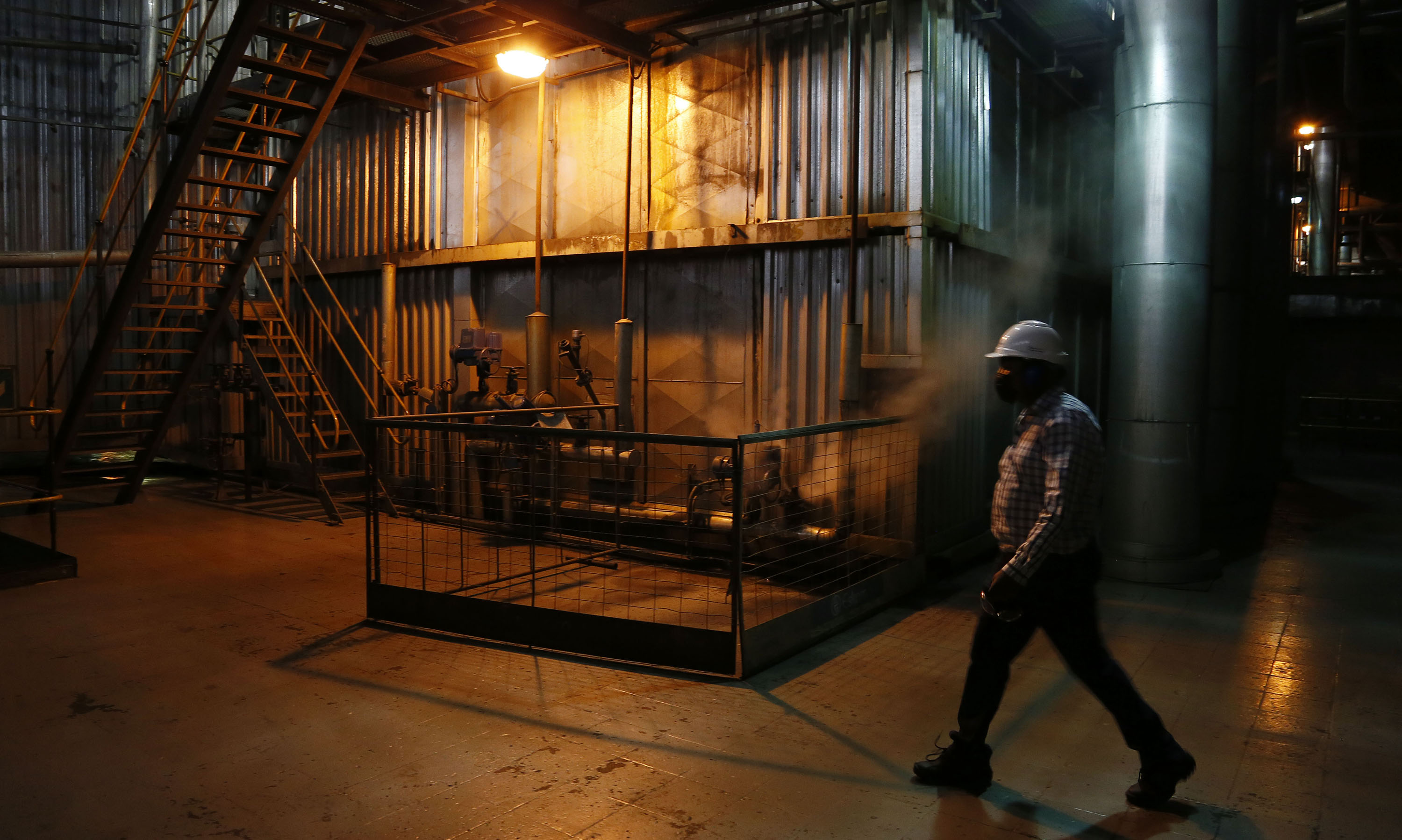
Inside the Komati Power Station, which will be repurposed for clean energy. (Photo: Felix Dlangamandla/Daily Maverick)
Nemadodzi explains this by pointing out the warped surfaces of the turbines in the other units.
A piece of metal, spinning at 3,000 revolutions per minute, that protrudes by just a few centimetres, has the potential to spray bits of metal all over a turbine hall at a speed that could cause widespread destruction, adding to the utility’s woes.
This is one of the reasons Eskom has had to shut down units to do planned maintenance.
Rhulani Mathebula, Eskom’s acting group executive for generation, noted in a recent media briefing that every power station in the fleet was running with a “partial load loss”, which means every power station has at least one generation unit operating with faults that require attention.
That is why, in the absence of new generating capacity, there is, will be and has to be load shedding.

Plant GM Marcus Nemadodzi examines the turbine blades of the decommissioned units. Photo: Felix Dlangamandla/Daily Maverick
The average age of an Eskom power plant is 37, putting most of them within normal “retirement age”, when without any maintenance, they would break down. Deferred maintenance and poor management have added to Eskom’s bag of woes. DM168/OBP
This story first appeared in our weekly Daily Maverick 168 newspaper which is available for R25 at Pick n Pay, Exclusive Books and airport bookstores. For your nearest stockist, please click here.
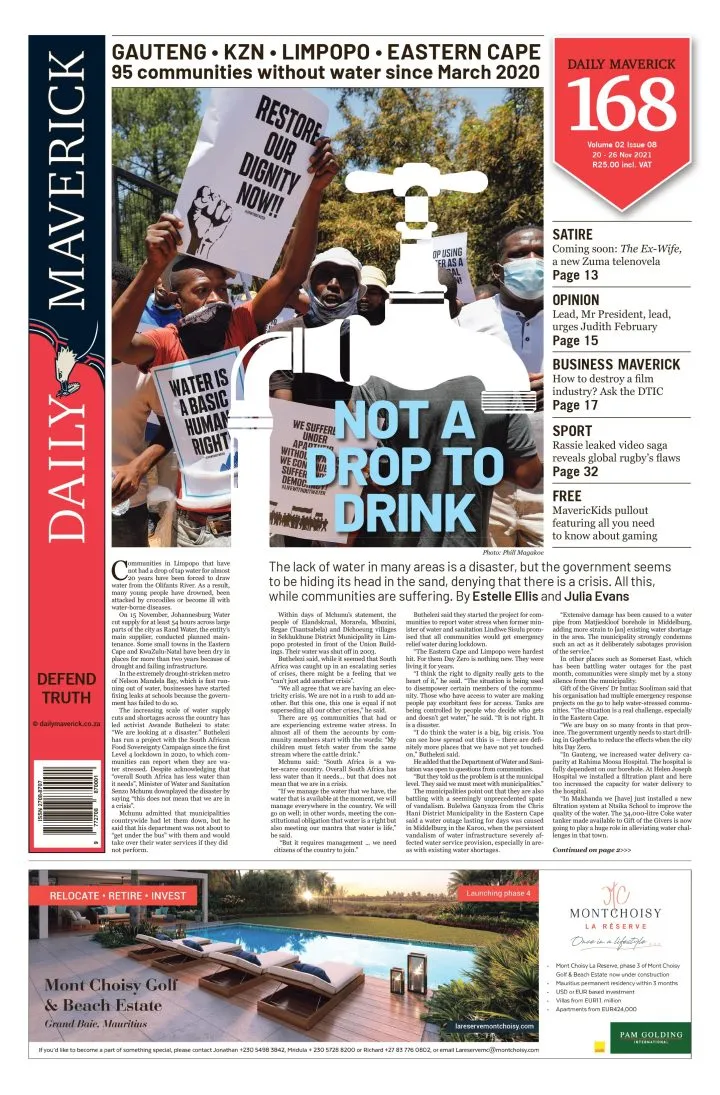
[hearken id=”daily-maverick/8835″]



















 Become an Insider
Become an Insider
= Primitive energy
Dig a hole in the ground, transport it, burn it.
Slightly more efficient than burning forests to heat water.
So what is the purpose of this “visual essay”?
If I remember correctly, Komati power station was taken out of mothball state to supplement Eskom’s generation capacity after the 2008 start of so-called loadshedding. Some units were cannibalised to get less damaged/aged units running. Unavailable parts and components had to be manufactured from basic principles. Hats off to the engineering teams who accomplished this! It was only supposed to run until Medupi came online in 2012, which is still not complete.
The dates you mention in the article was long after South Africa’s democratic transition. Who was the major shareholder of Eskom at the time? You can go lay the blame for the destruction of the State Owned Company’s assets directly at their door. Eskom has been stripped bare of money, skills and assets by the greed of the governing party. There is no way back. Prepare to go dark!
Well said and bang on the nail.
Agree, the headline is pathetic though, as if he wants to push a agenda first then conveniently forget that the current CancER government progressed with the “apartheid” relics without adding anything of value in 27 years except for masterminding THEFT of public funds meant for improving the system.
I agree with you 100% Marthinus. The greed to feed and rule at all cost.
“Operators in the Komati Power Station’s Unit 9, which produces about 120kW”.
That must surely be 120 MW. Many modern car engines produce 120 kW.
This article is of poor quality in terms of technical reporting. Get yourself a part time engineer to edit this stuff. Otherwise, well done on digging into the innards of the coal-fired dinos
Blaming apartheid for our coal-fired power plants really is a step too far. There are hundreds of coal-fired plants in the rest of the world. Did they have apartheid as well? While other countries have moved ahead with different forms of power supply what have the ANC done?
According to Wikipedia, there are 8,500 coal-fired power plants in the world, South Africa has 18 — really amazing that some-how apartheid had such wide-spread consequences…
One word – nothing, except steal from the poor to enrich themselves and corrupt the country.
“It is a dirty business”
Nope, it’s the cheapest way to provide electricity to people who want it. Unless we find ubiquitous free natural gas supplies and choose not to sell them at market prices, coal will still be the cheapest energy source. BBBEE corruption notwithstanding, but the race shills will find a way to siphon wealth into Swiss banks regardless of the energy source.
Nuclear is way cleaner but lefties won’t support it.
So we’re left with coal. Take the atavist and corrupt (black Africans) out of the equation, and coal power is all we need.
Nuclear is better and pebble bed was a great local invention. Unfortunately it didn’t hold any opportunity for politically connected black Africans to self enrich. It required real technical understanding.
The ANC government could never pursue it. It requires clever blacks, not Zumas corrupt cow herders.
As I understand it the pebble bed reactor was invented by the Germans who couldn’t make it work but for some reason we thought that we could. Not so easy was it.
The Pebble Bed IP was sold off to the Americans some years back. Pelindaba didn’t get it to work but nonetheless would have been amazing if they had got it off the ground. Westinghouse have developed the eVinci micro nuclear reactor – very similar concept to pebble bed – it can be transported on a large truck and they claim installation-to-operational can happen in 30 days with power ranges from 1-5 MW. Anyway, that’s not viable for SA. We have enough coal to provide the country with power for many decades if not centuries. There are only 2 things stopping us from obtaining stable base load grid supply. First is Eskom’s current state of disarray, preventing it from even being able to operate power stations let alone build new ones. Secondly, the green brigade (financed by the west) will continue to ply the world with unscientific apocalyptic nonsense about carbon levels and what that’s going to do to the world in 5/10/20/50/100 years. India are currently building 28 new coal fired power stations while simultaneously Modi plied Cop26 with platitudes on getting to carbon neutral in 50 years time. On a smaller scale, we should also be building new coal stations if we wish to have an economy left in the future.
Mr Settas. You start of very well…then, not so much. The green brigade? Unscientific apocalyptic nonsense about carbon levels? Civilization faces an existential moment & you use that idiot Modi as your model. Clearly show your scientific bent. Not! Let me speak for rationality. South Africa should NOT be building any coal stations. Solar & batteries. Wind. And…yes…new evolution nuclear.
“ Nuclear is way cleaner but lefties won’t support it.”
Unfortunately never lived up to its promise. Too cheap to meter became the most expensive baseload power.
Sure, extend Koeberg. But building new nuclear is cost-prohibitive.
Nothing to do with lefty politics, everything to do with engineering and cost accounting.
People also always forget the cost to decommission a nuclear power plant. It is massive!
” …. Eskom’s coal-fired power plants, …. are dinosaurs built to power the apartheid economy and not a modern, diversified South African one. And who has had the pleasure of ruling in SA since 1994? The anc has single handed destroyed the SOEs of this country by being of the opinion that whatever they ‘won’ from the whites will last forever. No management, no maintenance, no ethics etc. is required. Just keep on feeding and make sure that cadres are enriched and the anc stays in power.
Re the comment: “..Eskom’s coal-fired power plants, which overwhelmingly dominate baseload power generation, are dinosaurs built to power the apartheid economy and not a modern, diversified South African one.” Can the writer please explain the difference between (electricity) power generated by an apartheid coal-fired power plant, and the electricity (power) required for a modern economy?
Yeah. Good question.
The author had to bring in the apartheid connection to link it up with the dirty coal power. But, the previous government had to make do with the technology available at the time – hydro (limited) coal and some nuclear. now we are a so-called “modern, diversified South Africa” and the government still wants to stick to coal power. what to say about that, Mr van Diemen?
Generally a poorly written article and not worthy of DM.
Admittedly some of the power stations are old but if maintained properly, they should run for 50+ years. Eskom’s problem is lack of engineering and management expertise, lack of operator and maintenance skills and corruption. The way Affirmative Action was implemented in SA has done immeasurable damage to the economy and greed and corruption has just exacerbated the situation. For example, instead of a power station being fed with consistent good quality coal by conveyor direct from the adjacent goal mine, the coal is sourced from small producers sometimes far from the power station using road transport at higher cost and without proper quality control. When the coal contains rocks and metal scrap, it destroys the ball mills and causes rapid wear to the boiler tubes. A boiler should run for many years before having to be re-tubed. Eskom used to be run by experienced engineers – it is now run by people without the requisite knowledge and experience. I’m sorry to say but De Ruyter has little chance of turning this ship around with the current workforce and the corruption. Until the ANC accepts this they are on a road to nowhere.
Other than its use of the word as clickbait, what has apartheid got to do with this article?
DM… the new Twitter 🤣🤣🤣
It’s so bloody sad that people don’t enjoy their lives outside of work. I can’t actually find any other reason to explain the obsessive need to dominate and control by the old guard. South Africa even with our terrible general STEM results has true youthful brilliance as evidenced by the two teen google science prize winners and numerous innovators who have created so many brilliant inventions that never end up going anywhere due to that obsession by incumbent power-mongerers. The current situation is based on just that – 20 years ago, while Eskom bigwigs were crowing about the lowest power prices in the world the students at Potch University had developed the world’s thinnest solar panel – one that could be placed on a window. Of course that IP went straight off to Germany because they showed foresight in looking for future tech and appreciating that progress is well… progress.
How beautiful would the balance sheets of Mpumalanga look today from eco-tourism if we got support from projects like that at home… and how grateful would the families of those 5000 people who annually die from pollution be?